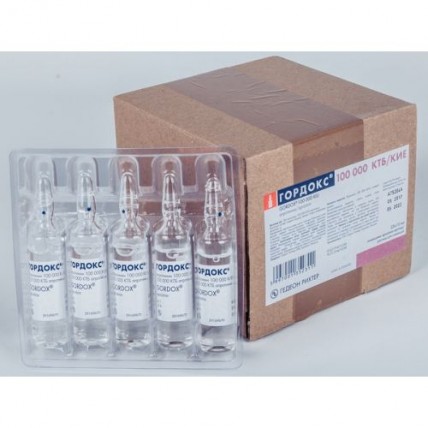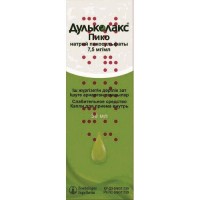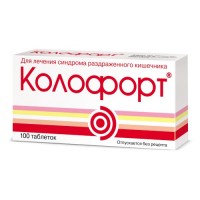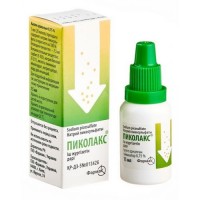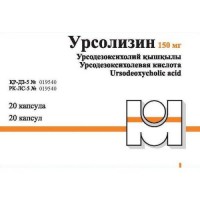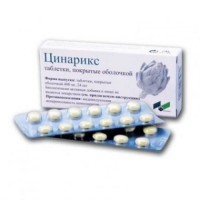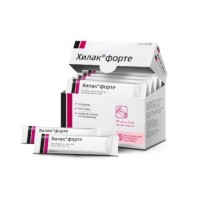Gordoks 100,000 KIU / ml 10 1's solution for injection in ampoules
- $15.30
The instruction for medical use of GORDOKS® medicine the Trade name of Gordoks® the International unlicensed name Aprotininum Dosage Form Solution for injections, 100000 KIE, 10 ml Structure of 10 ml of solution contains active agent – Aprotininum, solution concentrated, 100,000 KIE, excipients: sodium chloride, benzyl alcohol, water for injections. The description the Transparent, colourless or slightly painted solution. Pharmacotherapeutic group of Gemostatiki. Inhibitors of a proteinoliz. Aprotininum the ATX B02AB01 Code the Pharmacological Pharmacokinetics Later properties of intravenous administration Aprotininum is quickly distributed on all extracellular compartment that is followed by fast decrease in concentration of Aprotininum in plasma, time of semi-removal is from 0.3 to 0.7 hours. Later, in particular, in 5 hours after introduction, there comes the terminal phase of elimination at which time of semi-removal is from 5 to 10 hours. The placenta is probably not completely impenetrable for Aprotininum, however the penetration, apparently, occurs extremely slowly. During operation the average equilibrium concentration of drug in plasma at the patients receiving Aprotininum during heart surgery made from 175 to 281 KIE/ml when using the following scheme: 2 million KIE as primary dose intravenously, 2 million KIE in solution of primary filling of the pump and 500000 KIE in an hour in the form of continuous intravenous infusion throughout operation. Average equilibrium concentration of drug in plasma during operation after introduction of a half of this dose made from 110 to 164 KIE/ml. Data of pharmacokinetic researches of Aprotininum at healthy volunteers, at cardiological patients to whom operation in the conditions of artificial circulation was performed and at women to whom the hysterectomy was carried out, demonstrate that pharmacokinetic parameters in the range of doses from 50000 KIE up to 2 million KIE have linear character. Linking with proteins of plasma was studied by ex Vivo in plasma of rats by means of ultracentrifugation. About 20% of anti-fibrinolytic activity were caused by an untied form in a protein-free layer, and 80% of drug were in connection with proteins of serum. In an equilibrium phase the volume of distribution was about 20 liters, and the general clearance at the person was about 40 ml a minute of an organism. Aprotininum collected in kidneys and, to a lesser extent, in cartilaginous tissue. Accumulation of drug in kidneys is result of linking of Aprotininum with a brush border of epithelial cells of proximal tubules and also accumulations in phagolysosomes of these cells. Cumulation in a cartilage is caused by affinity of the main Aprotininum to acid proteoglycans. In other bodies the concentration of drug generally did not differ from the content in serum. The smallest concentration of drug was observed in a brain, Aprotininum practically did not come to cerebrospinal fluid. Only a small amount of Aprotininum gets through a placental barrier. The placenta cannot be considered as completely impenetrable for Aprotininum, however the speed of a penetration is extremely low. Penetration of Aprotininum into breast milk was not investigated. However because Aprotininum is not soaked up after oral administration, Aprotininum which is present at breast milk cannot do harm to the chest baby, irrespective of his quantity. Metabolism, elimination and excretion Aprotininum Molecule in kidneys under the influence of lizosomalny enzymes is split on shorter peptides or amino acids. At the person with urine less than 5% of the entered Aprotininum dose are excreted. After intravenous administration to healthy volunteers of Aprotininum with a tag 131I from 25% to 40% of the marked substance it was excreted within 48 hours with urine in the form of metabolites. These metabolites did not possess any enzyme - the inhibiting activity. Data on use of drug for patients with an end-stage of a renal failure are not available, however at patients with a renal failure clinically significant pharmacokinetic changes or obvious side effects were not observed. In this regard special dose adjustment in such cases is not required. The pharmacodynamics Aprotininum represents the molecule of inhibitor of proteases of a wide range having anti-fibrinolytic activity. Forming a reversible stoichiometric complex, enzyme-inhibitor, Aprotininum at the person inhibits trypsin, plasmin, kallikrein in plasma and fabrics that leads to fibrinolysis inhibition. Besides, it inhibits a contact phase of activation of fibrillation which is a factor of start of process of coagulation and stimulation of a fibrinolysis. Aprotininum is used during operations in the conditions of artificial circulation as it weakens inflammatory reactions that leads to decrease in need for transfusion of allogenic blood and decrease in blood loss and also to reduction of need of a repeated research of mediastinum concerning bleeding. Indications Aprotininum is shown for prevention of intraoperative blood loss and reduction of volume of a hemotransfusion at adult patients with high risk of big blood losses when performing the isolated cardiopulmonary shunting (i.e. the shunting of coronary arteries which is not followed by other cardiovascular interventions). Before use of Aprotininum it is necessary to estimate carefully a ratio advantage/risk and possibilities of alternative treatment. The route of administration and doses before introduction at all patients need to be carried out the test for IgG antibodies specific to Aprotininum. A test dose Owing to risk of development of allergic (anaphylactic) reaction, all patients should enter intravenously 10000 KIE (kallikrein - the inhibiting units) Aprotininum (1 ml) at least in 10 minutes prior to introduction of an initial dosage. If the initial dosage of 1 ml did not cause allergic reaction, then it is possible to enter a therapeutic dosage. Antagonists of H1 and H2 it is possible to enter in 15 minutes prior to test with Aprotininum. It is necessary to have available the equipment for performing standard emergency treatment of anaphylactic and allergic reactions. During open-heart surgeries (with the cardiopulmonary bypass) for decrease in blood loss and the need for a hemotransfusion the Dosage After introduction to an anesthesia (but before performing sternotomy) is recommended to enter a load dose from 1 to 2 million KIE by a slow intravenous injection or infusion within 20 – 30 minutes. The following 1 – 2 million KIE it is necessary to enter after turning on of the cardiopulmonary bypass. For the purpose of avoidance of physical incompatibility of Aprotininum and heparin added to solution of primary filling of the pump, each drug should be added to solution of primary filling of the pump in the course of recirculation to provide sufficient cultivation of both drugs before they mix up with each other. After initial bolyusny infusion in a high dose it is necessary to enter from 250000 to 500000 KIE an hour by continuous infusion before the end of operation. In general the total amount of Aprotininum entered during a medical cycle should not exceed 6 million KIE that is connected with the content of benzyl alcohol in injection solution. Aprotininum for intravenous administration should be entered through the central venous catheter which should not be used for administration of any other medicine. Гордокс® the patients who are in a prone position can enter only, introduction has to be carried out slowly (the maximum speed – from 5 to 10 ml a minute) by an intravenous injection or short-term infusion. Patients with a renal failure: according to the clinical experience accumulated so far, dose adjustment is not required. Use in pediatrics: babies, children of younger age, children and teenagers: the efficiency and safety of drug in this age group of patients is not established. Use for elderly patients: according to the clinical experience which is available so far, at elderly patients any special reaction to medicine is not observed. Side effects At the patients receiving Aprotininum for the first time the development of allergic or anaphylactic reactions is improbable. In case of repeated introduction the frequency of development of allergic (anaphylactic) reactions can reach 5%. In the retrospective analysis of allergic (anaphylactic) reactions it was shown that their frequency increases if repeated introduction takes place within 6 months after primary treatment (frequency is 5% on repeated exposure within 6 months and 0.9% on repeated exposure after the expiration of 6 months). Besides, in the retrospective analysis it was shown that the frequency of heavy anaphylactic reactions in addition increases at patients who within 6 months received Aprotininum more than two times. Even in case the patient well transferred repeated treatment by Aprotininum, the following introduction can cause heavy allergic reaction or, in extremely exceptional cases, a fatal acute anaphylaxis. The allergic or anaphylactic reactions affecting the separate systems of bodies are shown in the following forms: - cardiovascular system: hypotension - digestive system: nausea - a respiratory system: asthma (bronchospasm) - skin and its appendages: the itching, urticaria, rash If allergic reaction develops in time of an injection or infusion, then administration of drug needs to be stopped immediately. It is necessary to use standard measures of the emergency help, including administration of adrenaline, substitution of volume and corticosteroids. Often (from & gt, 1% to & lt, 10%) - a myocardial infarction Infrequently (from & gt, 0.1% to & lt, 1%) - ischemia of a myocardium, occlusions / fibrinferments of a coronary artery, a pericardiac exudate - thrombosis - a renal failure, a renal failure, an oliguria Seldom (from & gt, 0.01% to & lt, 0.1%) - arterial thrombosis (and its forms characteristic of vitals, for example: kidneys, lungs, a brain) - allergic reactions, anaphylactic / anaphylactoid reactions Very seldom (& lt, 0.01%) - the reactions which arose in the place of an injection or infusion, (blood clot) - phlebitis in the place of phlebotomy - a pulmonary embolism - the disseminate intravascular coagulation (DIC), a coagulopathy - an acute anaphylaxis (life-threatening) of the Contraindication - hypersensitivity to active ingredient or to any of drug excipients - the children's and teenage age up to 18 years - at patients who have IgG antibodies specific to Aprotininum at treatment by Aprotininum is observed the increased risk of an anaphylaxis - in case conducting testing for specific antibodies of IgG against Aprotininum before an initiation of treatment is impossible, but it is supposed that the patient received treatment by Aprotininum within the previous 12 months, administration of Aprotininum contraindicated Medicinal interactions Aprotininum inhibits effect of thrombolytic drugs, including streptokinases, urokinases and alteplaza (R-TAPAS = recombinant fabric the activator of a plaziminogen), and the effect of inhibition depends on a drug dose. Special instructions the observation researches Conducted recently confirm that treatment by Aprotininum can be followed by a renal failure, in particular at patients who already have a damage of kidneys. In the analysis of results of placebo - the controlled researches conducted at patients to whom operation of aortocoronary shunting was performed it was shown that in the group receiving Aprotininum the increase in level of creatinine in serum on 0.5 mg/dl in comparison with normal value was observed. Respectively, before prescribing of Aprotininum or having risk of damage of kidneys (for example, at simultaneous treatment by aminoglycosides) careful assessment of a ratio of advantage and risk is necessary for patients with a renal failure. This drug contains benzyl alcohol. According to the European management, the daily dosage of benzyl alcohol should not exceed 90 mg on kilogram of body weight. Thus, during a medical cycle the maximum dosage of Aprotininum cannot exceed 6 million KIE. When using Aprotininum careful assessment of a ratio of advantage and risk, in particular at patients who already applied earlier Aprotininum (including fibrinous sealing material, containing Aprotininum) is necessary as at them allergic reaction can develop. Though in most cases the anaphylaxis develops after introduction of the allowing dose within 12 months, there are separate messages about cases when anaphylactic reaction arose on repeated exposure after the expiration of 12 months. When performing therapy by Aprotininum it is necessary to have available means of the emergency help for treatment of allergic and anaphylactic reactions. All patients receiving treatment by Aprotininum need to enter at first a test dose to estimate presence of tendency to allergic reactions. The test dose has to be entered to the patient in the operating room. Antagonists of H1 and H2 it is possible to enter in 15 minutes prior to test with Aprotininum. The test dose of Aprotininum at all patients has to make one milliliter (10000 KIE) then it is necessary to watch the patient within, at least, 10 minutes before entering a load dose. However even, despite the lack of complications during the period after introduction of an initial dose of 1 ml, the therapeutic dose of Aprotininum can cause anaphylactic reaction. In case anaphylactic reaction develops, infusion of Aprotininum it is necessary to stop and take necessary emergency measures. Due to a possibility of development of reactions of hypersensitivity, before use of Gordoksa® it is necessary to estimate carefully a ratio of advantage and risk at each patient who already received treatment by Aprotininum. In case it is known that the patient already received or could receive repeated treatment by Aprotininum, it is recommended to observe the following precautionary measures. All patients at least in 10 minutes prior to introduction of an initial dose should enter a test dose of Gordoksa® in volume of 1 milliliter (10000 KIE). Besides, in 15 minutes prior to introduction of a test dose of Gordoksa® it is possible to enter the antagonist of H1 (for example, Clemastinum) and the antagonist of H2 (for example, Cimetidinum). If necessary for treatment of allergic (anaphylactic) reaction it is necessary to use standard measures of the emergency help. It is worth to remember, however, that the therapeutic dose can cause allergic reaction even if the patient well transferred introduction of primary 1-millilitre test dose, without having tested at the same time any undesirable symptoms. If it occurred, infusion of Aprotininum it is necessary to stop and start immediately holding standard actions of the emergency help for treatment of anaphylactic reactions. At the patients receiving Gordoks® the increase in frequency of development of a renal failure and mortality, in comparison with comparable control group on age which was characterized by the similar medical anamnesis and in which operations on chest department of an aorta in the conditions of artificial circulation with a blood circulation stop against the background of a deep hypothermia were also performed is noted. In such cases of Gordoks®, it is possible to appoint only with extreme care. It is necessary to carry out the corresponding anticoagulating treatment by heparin. Additional remarks on use of drug in the conditions of artificial circulation For maintenance of adequate anticoagulating activity against the background of artificial circulation at simultaneous use of Gordoksa®, use of any of the following methods is recommended: 1. activated coagulation time (ACT): AVS cannot be considered as the standard test for coagulation, interpretation of results of this test depends on Aprotininum presence. Besides, test results are influenced by the distinctions connected with cultivation and temperature which is used in the conditions of artificial circulation. It is shown that influence of Aprotininum is significant to a lesser extent concerning kaolinic AVS, in comparison with AVS with use of the diatomic earth (celite). Despite a variety of protocols, it is recommended to carry out the AVS 750-second test with use of diatoms
y lands or the AVS 480-second test with use of a kaolin in the presence of Aprotininum, irrespective of degree of hemodilution and a hypothermia. Behind consultation concerning interpretation of results of the analysis at presence of Gordoksa®, it is necessary to address the producer of reactants for the AVS-test. 2.vvedeniye constant dosages of heparin: a standard load dose of heparin which is entered before cardiac catheterization and also not less than 350 ME/kg have to make amount of heparin which is added to solution of primary filling of the cardiopulmonary bypass. The additional dose of heparin is defined with the body weight of the patient and duration of intervention in the conditions of artificial circulation. 3. titration heparin / protamin: results of use of this method are not influenced by Aprotininum presence therefore it is acceptable for measurement of level of heparin. The interrelation between a dose of heparin and the answer to it should be estimated by means of titration of protamin before administration of Aprotininum (for definition of a load dose of heparin). The additional amount of heparin can be entered taking into account concentration of heparin which is measured by means of titration with protamin. Concentration of heparin in the conditions of artificial circulation should not decrease lower than the level of 2.7 Pieces/ml (2.0 mg/kg) or is lower than a dose which is defined at the testing of dependence of the answer on a heparin dose held before administration of Aprotininum. After the end of artificial circulation if the patient received injections of Gordoksa®, heparin should be neutralized administration of protamin. The amount of protamin should be calculated, proceeding from the fixed ratio which is determined by amount of the entered heparin or is calculated by means of a titration method with protamin. Important: use of Gordoksa® does not mean that the need for heparin decreases. Pregnancy and the period of a lactation Adequate and well controlled researches at pregnant women were not conducted. Aprotininum should not be used during pregnancy unless the potential advantage exceeds the expected risk. In case of development of serious undesirable reactions (such as anaphylactic reaction, cardiac arrest, etc.) and during their treatment at assessment of risk and advantage it is necessary to take potential danger of harming a fruit into account. The ability of Aprotininum to be allocated with breast milk of the person is not studied. Information on use of injections of Gordoksa® during breastfeeding is absent. Considering that Aprotininum is not soaked up at intake, its any quantity which is present at breast milk cannot do harm to the baby. Features of influence of medicine on ability to run the vehicle or potentially dangerous mechanisms Taking into account scope of drug, consideration of these effects is irrelevant. Overdose Symptoms: manifestations of overdose or intoxication are not described. Treatment: specific antidote does not exist. Performing symptomatic treatment is recommended. A form of release and packing On 10 ml in ampoules from colourless glass with a point for a break. On 5 ampoules place in plastic blister strip packaging. On the 5th blister strip packaging together with the instruction for medical use in the state and Russian languages place in a box of cardboard. To Store storage conditions in original packing, in the place protected from light at a temperature not over 30 of 0C. To store out of children's reach! Not to use a period of storage of 5 years after expiry date. Prescription status the Name and the country of the JSC Gideon Richter manufacturing organization, 1103 Budapest, Dyomryoi St., 19-21, Hungary the Name and the country of the owner of the registration certificate of JSC Gideon Richter, Hungary the Address of the organization accepting in the territory of the Republic of Kazakhstan claims from consumers on quality of products Is released On the prescription only for stationary use: Representative office of JSC Gideon Richter in RK E-mail: info@richter.kz Phone number: 8-(727) 258-26-22, 8-(727) 258-26-23
To develop
y lands or the AVS 480-second test with use of a kaolin in the presence of Aprotininum, irrespective of degree of hemodilution and a hypothermia. Behind consultation concerning interpretation of results of the analysis at presence of Gordoksa®, it is necessary to address the producer of reactants for the AVS-test. 2.vvedeniye constant dosages of heparin: a standard load dose of heparin which is entered before cardiac catheterization and also not less than 350 ME/kg have to make amount of heparin which is added to solution of primary filling of the cardiopulmonary bypass. The additional dose of heparin is defined with the body weight of the patient and duration of intervention in the conditions of artificial circulation. 3. titration heparin / protamin: results of use of this method are not influenced by Aprotininum presence therefore it is acceptable for measurement of level of heparin. The interrelation between a dose of heparin and the answer to it should be estimated by means of titration of protamin before administration of Aprotininum (for definition of a load dose of heparin). The additional amount of heparin can be entered taking into account concentration of heparin which is measured by means of titration with protamin. Concentration of heparin in the conditions of artificial circulation should not decrease lower than the level of 2.7 Pieces/ml (2.0 mg/kg) or is lower than a dose which is defined at the testing of dependence of the answer on a heparin dose held before administration of Aprotininum. After the end of artificial circulation if the patient received injections of Gordoksa®, heparin should be neutralized administration of protamin. The amount of protamin should be calculated, proceeding from the fixed ratio which is determined by amount of the entered heparin or is calculated by means of a titration method with protamin. Important: use of Gordoksa® does not mean that the need for heparin decreases. Pregnancy and the period of a lactation Adequate and well controlled researches at pregnant women were not conducted. Aprotininum should not be used during pregnancy unless the potential advantage exceeds the expected risk. In case of development of serious undesirable reactions (such as anaphylactic reaction, cardiac arrest, etc.) and during their treatment at assessment of risk and advantage it is necessary to take potential danger of harming a fruit into account. The ability of Aprotininum to be allocated with breast milk of the person is not studied. Information on use of injections of Gordoksa® during breastfeeding is absent. Considering that Aprotininum is not soaked up at intake, its any quantity which is present at breast milk cannot do harm to the baby. Features of influence of medicine on ability to run the vehicle or potentially dangerous mechanisms Taking into account scope of drug, consideration of these effects is irrelevant. Overdose Symptoms: manifestations of overdose or intoxication are not described. Treatment: specific antidote does not exist. Performing symptomatic treatment is recommended. A form of release and packing On 10 ml in ampoules from colourless glass with a point for a break. On 5 ampoules place in plastic blister strip packaging. On the 5th blister strip packaging together with the instruction for medical use in the state and Russian languages place in a box of cardboard. To Store storage conditions in original packing, in the place protected from light at a temperature not over 30 of 0C. To store out of children's reach! Not to use a period of storage of 5 years after expiry date. Prescription status the Name and the country of the JSC Gideon Richter manufacturing organization, 1103 Budapest, Dyomryoi St., 19-21, Hungary the Name and the country of the owner of the registration certificate of JSC Gideon Richter, Hungary the Address of the organization accepting in the territory of the Republic of Kazakhstan claims from consumers on quality of products Is released On the prescription only for stationary use: Representative office of JSC Gideon Richter in RK E-mail: info@richter.kz Phone number: 8-(727) 258-26-22, 8-(727) 258-26-23
To develop
